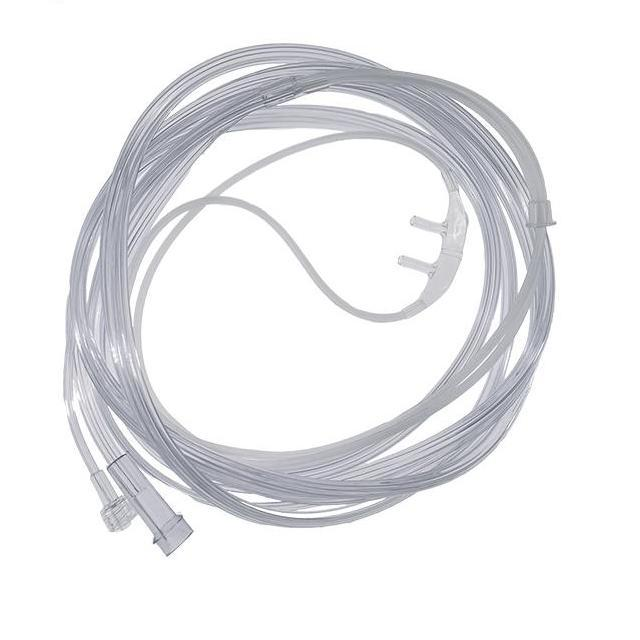Indications:
Nasal oxygen Cannula capnography meets the needs of non-invasive measurement of CO2 partial pressure in exhaled breath. Carbon dioxide detection expresses the CO2 concentration versus time as a CO2 waveform. The placement of nasal oxygen cannula Nasal cannula capnography should not interfere with the management of major life-threatening or other major therapeutic strategies.
In spontaneous breathing, non-intubated patient's nasal oxygen cannula Nasal cannula capnography can be used to:
1.Rapid assessment of critically ill or seizing patients
2.Determining response to acute respiratory distress therapy
3.Determining the adequacy of ventilation in a comatose or comatose patient
4.Provide indicators for acid-base imbalance
5.More data for patients with sepsis or septic shock
6.Provide low-flow oxygen therapy
Contraindications:
Nasal oxygen Cannula capnography may be contraindicated for:
1.Patients with nasal congestion
2.Patients with facial injuries who cannot use a cannula
3.Patients who cannot tolerate nasal oxygen cannulae
Procedure:
1.Assemble EtCO2 sampling nasal oxygen cannula, O2 source, patient monitor.
2.Connect the EtCO2 sampling nasal oxygen cannula to the O2 source and set to the desired flow rate.
3.Place the EtCO2 sampling nasal cannula on the patient
4.Connect the sampling line to the patient monitor CO2 intake and activate the sampling mode by pressing the monitor's CO2 quick access key.
5.Note the readings and waveforms.
6.Document procedures, values and attach files to patient care reports.
7.Monitor the patient's O2 saturation, breath sounds, chest wall motion, respiratory rate, and capnography.
Guidelines:
Nasal oxygen cannula capnography can be used to evaluate a wide range of patients. Capnography provides reliable readings in low perfusion conditions.
Nasal cannula capnography can be used to actively grasp the patient and not be confused by muscle activity or motion artifacts. Providers can use capnography data to differentiate between apnea, ineffective or effective ventilation.
Nasal oxygen cannula capnography allows providers to dynamically monitor ventilation status in real-time in patients with acute respiratory distress of any cause, including: bronchiolitis, croup, asthma, cystic fibrosis, heart failure, and chronic obstructive pulmonary disease.
a.Increased EtCO2 despite treatment indicates worsening ventilation
b.EtCO2 stabilization or improvement, indicating that the treatment is effective
Nasal oxygen cannula capnography can help differentiate effectively ventilated obtuse or comatose patients from those with ineffective ventilation. Conditions that may impair ventilator function Alcoholism, intentional or unintentional drug overdose, and post-ictal conditions (especially those with concomitant use of benzodiazepines).
Nasal oxygen cannula capnography can provide data on acid-base disorders and help guide treatment planning.
Nasal oxygen cannula capnography could provide another data stream for identifying sepsis patients. In addition to standard sepsis alert criteria (eg, high-risk patients with known/suspected infection, temperature <36°C or >38°C, increased pulse and respiratory rate combined with systolic blood pressure <90 mm/Hg), patients may present with ETCO2 level decreased.


